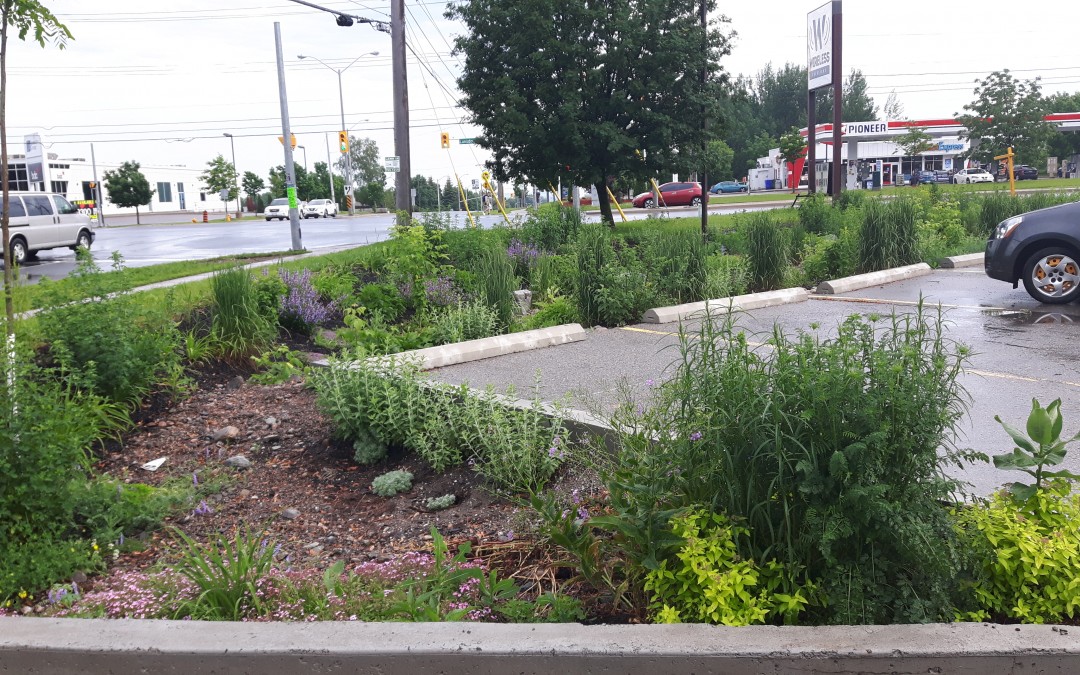The Umbrella Stormwater Bulletin

Innovative, low cost ways to reduce flooding
Are you looking for ways to help flood-vulnerable neighbourhoods adapt to extreme rainfall? Join us for a webinar on 13 July, 2017 at 1:00pm. Learn how your municipality can benefit from training opportunities with leading experts, peer to peer knowledge sharing, and customized support to save money, reduce flood risk, and protect water.
We’re creating a network of municipalities interested in implementing neighbourhood-based approaches to flood reduction including managing rain where it falls and rainproofing homes and businesses. The network will provide access to case studies, webinars, and workshops designed to meet your needs.
For select interested municipalities, we will be able to provide additional support. This could include support and funding to:
- Create a flood reduction plan for a vulnerable neighbourhood, including community engagement strategies, incentives for retrofits on private property, public infrastructure needs
- Conduct a green infrastructure audit in a vulnerable neighbourhood to identify current assets and areas of opportunity
- Identify local policy barriers to green infrastructure implementation and action plan a way forward
Get in touch with other ideas for support and funding you could use to help your municipality adapt to climate change with green infrastructure.
Communities across Canada and the U.S. have been finding success with the neighbourhood approach to flood reduction, which brings municipal governments, local residents and businesses together to take action to reduce flood risk.
Over the past two years, Green Communities Canada has been working with partners in Kingston, Peterborough and Thunder Bay to retrofit private and public property in flood-prone neighbourhoods. Residents and city staff revision the neighbourhoods, and residents are engaged on the topics of stormwater, flooding, and what they can do on their own properties to protect themselves and their communities from flooding. In 2017, volunteers will come together in neighbourhood workbees to implement select green infrastructure projects on private property, while municipal governments make installations on public property.
This model has proved successful in other communities. The Center for Neighbourhood Technology has been working with neighbourhoods in the Chicago area to get them “rain ready”. Most recently, they have worked with residents, businesses and city staff in six communities in Illinois known as the Calumet Corridor to create “Rain Ready plans” to address flooding in a way that will create multiple benefits for the community.
Toronto and Region Conservation Authority has been working in several neighbourhoods in their watershed through the Sustainable Neighbourhood Retrofit Program (SNAP), in which they work with communities to create climate adaptation plans and implement solutions.
We aim to bring together Canadian municipalities at any stage of this process –whether you are considering the possibility of a neighbourhood-based approach, or already have projects well underway. Municipalities will share challenges and best practices with each other, and will have access to both online and in person training with experts as required. We will then work with participating municipalities to apply for additional funding to implement flood-reduction activities on a neighbourhood scale.
Register now for our webinar to learn more about how your municipality can participate. Visit our website or contact Clara Blakelock for more information.

